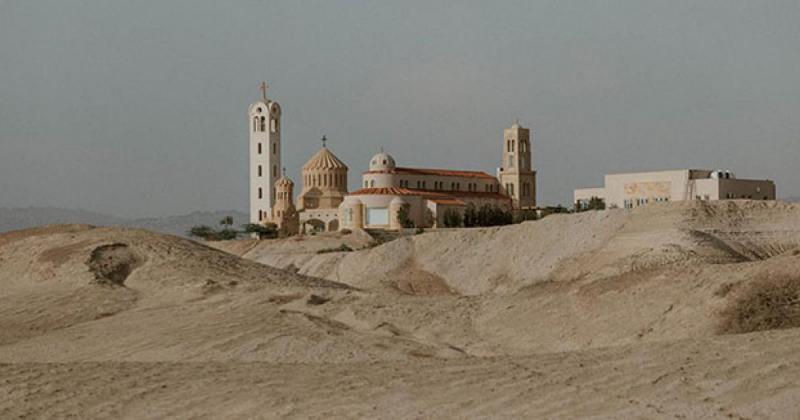I was delighted days ago to participate in the ceremony honored by His Majesty King Abdullah II and Crown Prince Al Hussein Ibn Abdullah II which marked the launching of a master plan to develop a land in the vicinity of the Baptism Site. Indeed, it was an event that brings about benefits to our country, relevant to Jordan, namely the holy land, the holy soil, and of course the holy water.
Since 2000, we have celebrated the inauguration of the Baptism Site in order to serve as a destination for pilgrims and visitors. The first pilgrim to the site was Saint Pope John Paul II. Since then, the Baptism Site underwent extensive development including clearing the area of mines, upgrading the site to be ready for receiving visitors, and building churches that have sprouted one after the other at a time when there is room for others. The effort that has been exerted over the past years is very wonderful and fruitful, as groups of pilgrims have been streaming to this site from all countries of the world. It is hoped that there will be more numbers in the future.
What happened a few days ago was the launching of a project to develop the lands in the vicinity of the Baptism Site--that is not at the Baptism Site itself, as I mentioned in a previous article titled, “Religious Tourism: Benefiting from the Experiences of Others,” in Al-Rai newspaper, on August 23, 2022-- which is to a great extent very similar to the site, city of Lourdes and its grotto in southern France. There is a place for prayer and the surrounding is a place for tourism that provides all facilities for pilgrims and visitors. What has been recognized by UNESCO as a World Heritage Site is the prayer site which maintains its own status. However, what is intended in the new project is to develop the lands surrounding the site which stand at about 1,400 acres.
Based on the directives of His Majesty the King, Jordan has begun the first phase of developing a religious-tourist "city" surrounding the Baptism Site which was reviewed by all those present including clergymen, ambassadors of several countries, senior statesmen, and investors specialized in tourism affairs. Therefore, we count a lot on this event, and view it as not merely being an event pertaining to Jordan alone, but rather a global event because the “Baptism City” is a city that will be established in order to go hand-in-hand with pilgrims and tourists who come to the Baptism Site in the process of prayer, pilgrimage, and seeking forgiveness. It is hoped that the visitors, who stay at the site for hours, will extend their stay to last for days and nights, due to the project's inclusion of hotels, which in turn preserves the "unique" character of a unique sacred site. This is what the new city--which was excellently prepared by Mr. Samir Murad, chairman of the preparation committee; and Dr. Kamel Mahadin, who excelled in the past in his performance in Aqaba. The development we witness these days could be part of his era that is why he is extending the experience and success in Aqaba to the Baptism Site region.
This is not the whole issue. The event patronized by His Majesty the King was the first phase of the huge project, as we have foreseen through these plans the future. Thus, efforts now remain focused on finding local or Arab investors, or even friends from anywhere, and this is corroborated by the extensive presence of ambassadors of friendly foreigner countries because we need the support of all our brethren and friends in order to advance this project, so that it does not remain ink on paper, or a show on screens, but to be materialized on the ground.
I learned from a number of officials that the project needs three to five years to be fulfilled and maybe more depending on the prevailing circumstances. However, what I foresee is that the future of this region which will be qualified to be a suitable place to receive pilgrims, and to spend a longer time in this “wilderness” where John the Baptist lived more than 2,000 years ago, and where he baptized Lord Jesus Christ. The pilgrims of the 21st century will nowadays live this experience anew, which is a spiritual, human, cultural and historical one.
We hope that the Jordan religious tourism will move forward under the leadership of His Majesty the King, and with the efforts of philanthropists and advisors, led by His Highness Prince Ghazi Ibn Muhammad, who has led the process of developing the Baptism Site, and today leads the process of developing the lands in the vicinity of the Baptism Site, so that this place will truly be a scared place and worthy of pilgrimage, and will consequently develop within the spiritual environment that the pilgrims looks to and will surely find in Jordan.
Go ahead, then, and may the Lord guarantee success for this great project.
